Have you noticed the round, white marks left by wet glasses or hot cups of coffee on bedside tables or table tops? Have you spilled your glass of brandy, cognac or whisky and when you went to wipe up the table you found that the varnish had gotten on the napkin? The table was topped with nitrocellulose varnish - nitro, as it's commonly called - the most commonly used furniture-finishing material 40-50 years ago. New, much stronger and safer finishing materials have come along in the meantime, but nitro lacquer continues to be used because of its ease of application and warm, pleasant appearance. Find out more about the history of nitro lacquer, how to apply it to achieve beautiful surfaces and how to solve the problems that arise from improper use of furniture.
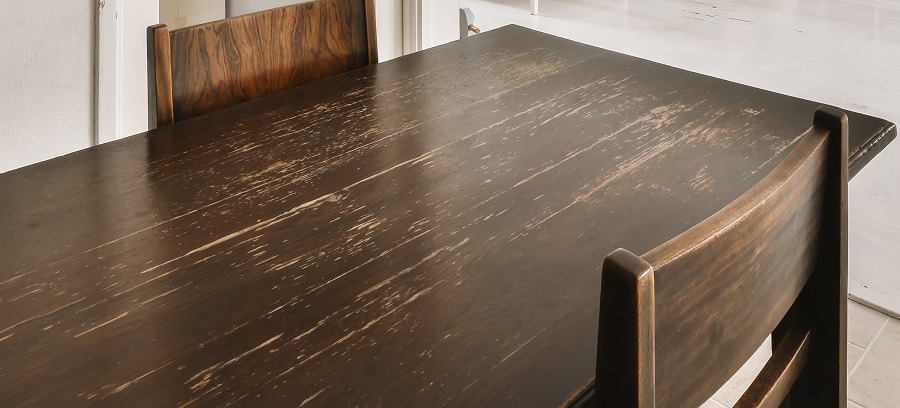
Nitro lacquer has revolutionized the finishing of furniture, musical instruments and the automotive industry
The first step on the road to the nitrocellulose lake was to obtain nitrocellulose. In 1862, Alexander Parkes treated cotton cellulose with a mixture of nitric acid and sulphuric acid to obtain nitrocellulose, an unstable and flammable substance. It was originally used as a substitute for gunpowder, but later formed the basis for celluloid, the raw material for photographic film and film rolls for motion pictures.
In 1921 Eduard Flaherty, an employee of DuPont, dissolved nitrocellulose in a mixture of solvents to obtain nitrocellulose varnish. The resulting liquid could be applied by spraying, and once the solvents evaporated, the wood or metal to which it was applied was protected by a tough, elastic film. A sufficient quantity of pigments could also be incorporated into the varnish, thus obtaining paints of various colors. It was the invention that revolutionized the car industry.
Until the advent of Duco paints - the name for DuPont's nitro paints - cars were painted with a natural Japanese lacquer, Japan Black. It was sturdy, it adapted very well to the production flow, but it was black and the color could not be changed. In fact, Henry Ford, the American automaker who democratized the automobile by making it accessible to ordinary people, used to say that cars could be ordered in any color as long as it was black. Duco was diversely colored and dried much faster than Japanese lacquer, so it was quickly adopted by the Ford Motor Company and remained the paint of choice until the 60s.
Nitro lacquer, later improved with resins and plasticizers, became the main finish for furniture and musical instruments. Until oils, waxes and shellac were the main materials used to protect wood against water, dirt and mechanical aggression. Nitro lacquer was very similar to shellac in appearance, but easier to apply and more durable. Like cars, furniture and musical instruments were finished with nitro almost exclusively until the 50s and 60s. Even after the advent of high-performance varnishes, classical guitars and violins continued to be finished with nitro varnish for a long time in Romanian factories.
The emergence of catalyzed varnishes, which are much more resistant, and waterborne varnishes, which are safer due to the lack of solvents, as well as the strict rules introduced in factories because of fire risks, have led to a reduction in the use of nitro varnishes and even their total replacement in some factories.

A varnish that's easy to apply and very nice to look at, but not very durable
Nitro lacquer is simple to use because it does not need catalysts or other substances to cure. As with shellac, it involves resins dissolved in solvents. The film is formed when the solvents evaporate and the resin becomes solid again. The plasticizers in the composition make the film more elastic, reducing the risk of cracking. The varnish can be matt or glossy, depending on an additive in its composition. This is called a matting agent and determines by quantity gloss level of the lake. The color is warm and pleasant, yellowish-brown, tea-like. Unfortunately, over time the color becomes more yellowish as the nitro lacquer's resistance to light is low. This is most easily seen on resinous wood because it combines with wood color change.
The adhesion between the nitro lacquer layers is very good. When the next coat is applied, the solvents soften the previous coat, so that they adhere very well to each other. The end result is a very uniform film, with no risk of the layers peeling off. The ability of thinners to soften the dry varnish layer also has negative effects, as the film is not resistant to alcohol, spirits and other organic solvents. Their action will lead to whitish spots, loss of gloss and softening of the film.
Do NOT apply catalyzed solvent-based lacquers such as polyurethane over nitro lacquers. As above, the solvent soaks the nitro lacquer, but does not have enough time to get all of it out before the polyurethane lacquer hardens. The solvent left inside turns to vapors and pushes the film of polyurethane varnish formed on top, which gives way. In common factory parlance the lake blossoms. The phenomenon is explained at length here.
Because the film is not formed by a chemical reaction, as in polyurethane varnishes, polyester, acrylic or waterborne, its resistance to scratching, abrasion or staining is low. Cold water that remains for a longer period whitens the film, while steam, hot water or the continuous presence of drips and drips can scour it. Red wine, coffee, cold or hot colored drinks can stain the nitro lacquer film. The varnish scratches easily, even with abrasive cleaners, dents remain and the abrasion resistance is low and is not recommended for floor finishes.

The varnish can be applied with a brush, brush stroke, spray or pour. For do-it-yourself projects it is recommended to apply with a brush or a paint roller with a solvent-resistant roller. The viscosity differs depending on the method of application, with a thinner varnish required for spraying and a more viscous varnish for brushing or pouring. The high solvent content makes the varnish flammable and the odor on application quite strong. Application should be made in well-ventilated areas and it is recommended to avoid storing large quantities of varnish in rooms not equipped for fire protection. The solvent odor of furniture finished with nitro lacquer persists for another 3-4 weeks because complete, thorough drying is a lengthy process.
What problems can occur and how to fix them
The good news is that the film can be fixed as easily as it can be damaged. If the film bleached without flaking, use a heat source, hair dryer or iron. The white area is caused by water getting into the film, and the heat helps it out. If you use an iron, put a folded tablecloth or thinner blanket and iron over it 3-4 times, then lift the blanket so the steam can escape. Wipe the surface with a soft, dry, clean cloth and repeat. It may take 3-4 repetitions until the white area disappears completely. Simpler with a hairdryer. The furniture below, bleached by the water drained from the flowers held on top, has been remedied with hot air. You can also find methods to remedy white spots here.
Small holes or fine scratches can be blurred by sanding with very fine paper or with a mixture of solvents commonly called equalizer. Use less volatile solvents such as butyl acetate or butyl alcohol. The equalizer is sprayed finely over the film, after which the soaked film is leveled with a roller or a smooth, solvent-resistant pad. If it cannot be sprayed, the equalizer is applied directly with the levelling pad. If sanding is preferred, use fine abrasive papers in the 800 grit range and up, or abrasive pastes and felt disks. Do not apply too hard to avoid changing the surface gloss. It is recommended to work over the entire surface to obtain a uniform film without unevenness.
Unless the berry underneath the film was affected, big holes repair by dripping nitro lacquer into them. Allow to dry and, if necessary, sand the surface to level it and apply a fresh coat of varnish. The repair may only be visible if the lacquer is very glossy.
Deep, deep scratches and flaking film must be sanded to remove. Sand with 220 or 240 grit sandpaper until the scratch disappears or no more flaking varnish is visible. If too much pressure has been applied to an area and unevenness appears, the surface should be leveled. Finally, apply a fresh coat of varnish.
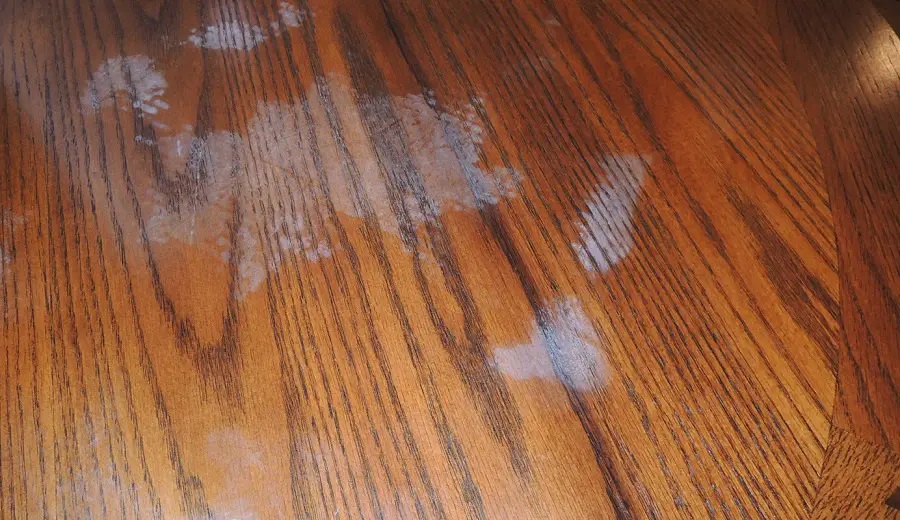
I hope you find the information useful. As always, additions are welcome. And if you have any questions or queries, please leave them below in the dedicated space. I will be sure to reply.























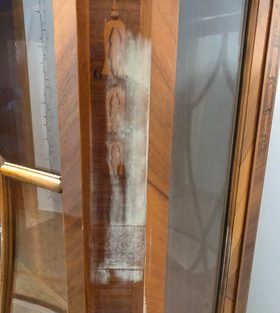




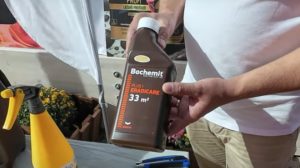
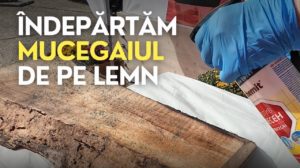







Hello,
I reconditioned an old ash desk and treated it with a coat of linseed oil. Can I now varnish it again. Thank you.
Hello!
Only with alkyd varnish and only if the wood is not saturated with oil, i.e. you have applied several coats until the wood has absorbed nothing. If it is saturated, the alkyd varnish cannot grip the wood (it has no adhesion) and will peel off (flake) very quickly.
Allow at least 6 months to elapse before coating with alkyd varnish.